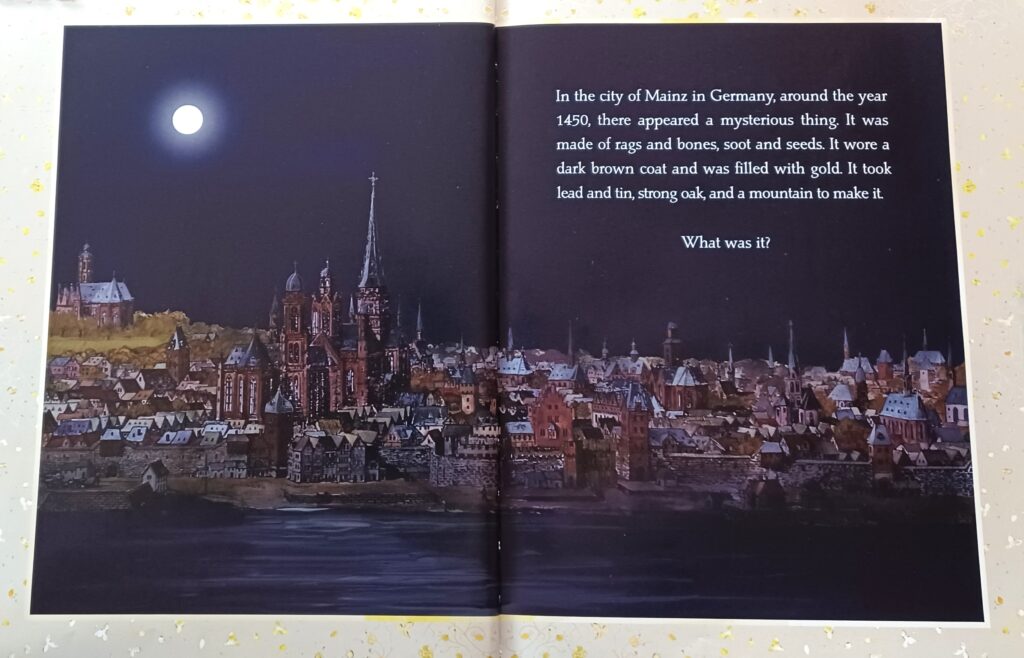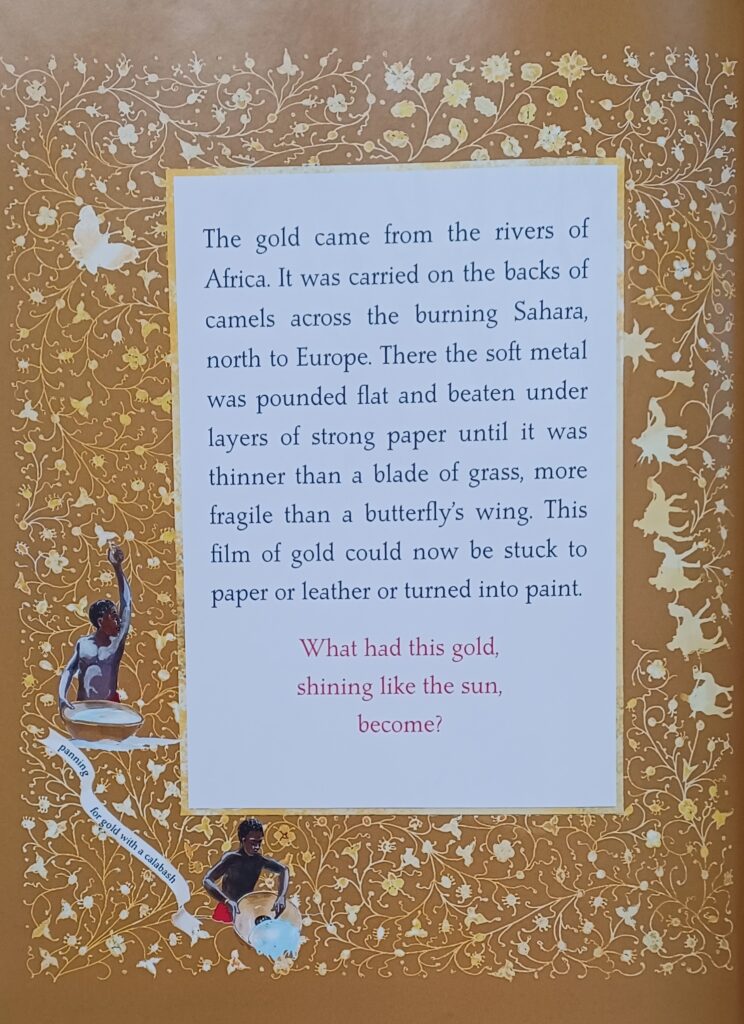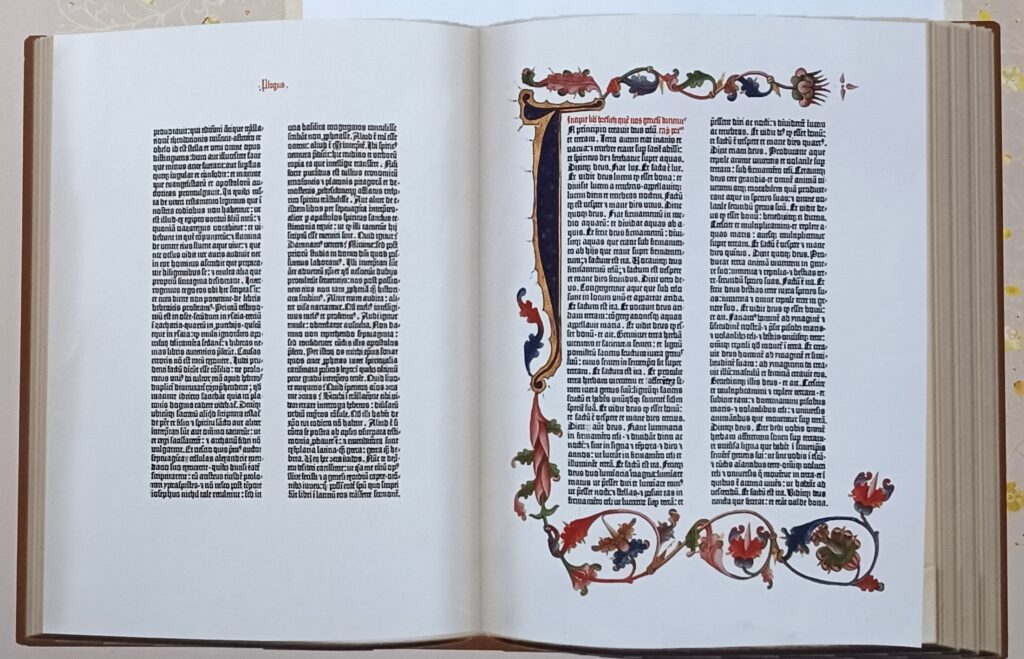James Rumford’s story opens with a riddle.


Each element of the riddle is explained in imagination-sparking prose with glowing illustrations.

The rags became paper stiffened with glue made from bones. The brown coat was leather, printing types were molded from the lead and tin, and the oak was used to build the printing press.
The soot and seeds made ink.

In the Epilogue, Rumford says, “The ink was jet black, and even today it glistens like new. No one knows how he was able to do such beautiful work.”
The mountain that made the mysterious thing was Johannes Gutenberg, “John from the Good Mountain.”

Though Gutenberg’s printed pages were finished with hand-painted designs and traditional gold leaf, his invention began the end of the age of illuminated manuscripts.

This book is an exquisite introduction to the world-changing advent of machine-printed books. It would also be an excellent starting point for a discussion with older children. Every invention that has been hailed as progress by many has also been met with dire warnings by some. Ancient philosophers cautioned that writing would be the ruin of man’s memory, and in some ways, that has proven true.
For the most part, we celebrate technology that has given more and more people access to less and less expensive books. But that same technology has made it increasingly difficult for readers to sift through piles of dust for gold and diamonds. Would it have been better if we had continued to make books by hand one at a time?
The Epilogue of this book gives further excellent details and lists suggestions on how to search the Internet if you would like to learn more about the history of printing and bookmaking.
You can find inexpensive used copies at Amazon.com.
Check Biblioguides for other inexpensive sources.